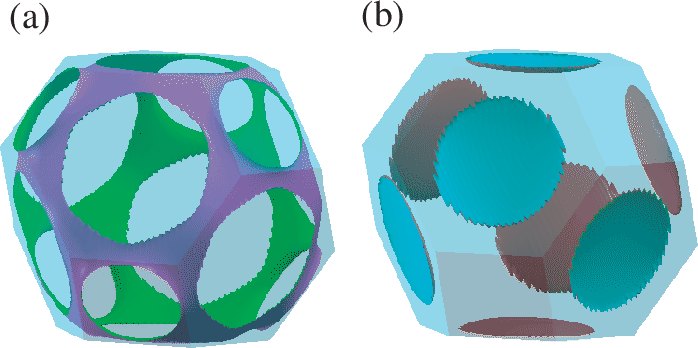 |
The Fermi surface is visualized by XCrySDen [61]. When you perform calculations of the density of states by the following keywords:
Dos.fileout on # on|off, default=off Dos.Erange -20.0 20.0 # default = -20 20 Dos.Kgrid 61 61 61 # default = Kgrid1 Kgrid2 Kgrid3you will obtain a file '*.FermiSurf0.bxsf', where '*' is 'System.Name', and the file can be visualized by XCrySDen [61]. As well as 'Dos.Fileout', 'DosGauss.fileout' can be also used for the purpose. In case of spin-polarized calculations, two files are generated as '*.FermiSurf0.bxs' and '*.FermiSurf1.bxs' for spin-up and spin-down states, respectively. In case of non-collinear calculations, a file '*.FermiSurf.bxs' is generated. It is noted that a large number of k-points should be used in order to obtain a smooth Fermi surface. As an example, Fermi surfaces of the fcc Ca bulk are shown in Fig. 43. The input file used for the calculation is 'Cafcc_FS.dat' in the directory 'work'.
 |